There are many reasons to make an image black and white in Photoshop. Monochrome photos highlight lines, light, and shapes. Color can sometimes be distracting or dull. Also, we see the world in color. A photo in black and white is a welcome change. It draws our attention to different aspects of our everyday world. In many ways, monochrome simplifies the image by removing the color. And some photographers find monochrome photos more artistic.
There's no formula for deciding which photos work better in monochrome or color. However, removing color is easy. I'll show you how to convert an image to black and white in Lightroom and Photoshop. In both programs, there is a simple method and a different method that gives you more artistic flexibility.
Lightroom makes it easy to remove color from a photo. Go to the Settings drop-down menu and select Settings > Convert to Black and White (hotkey "V"). You can also do this in the Develop Module by choosing the Black & White treatment option in the Basic panel. This will switch your photo's profile to Adobe Monochrome.
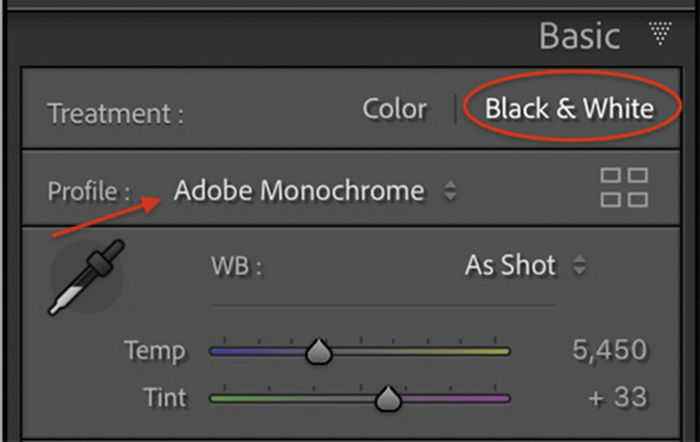
Screenshot of Lightroom's Basic panel showing Black & White treatment option.

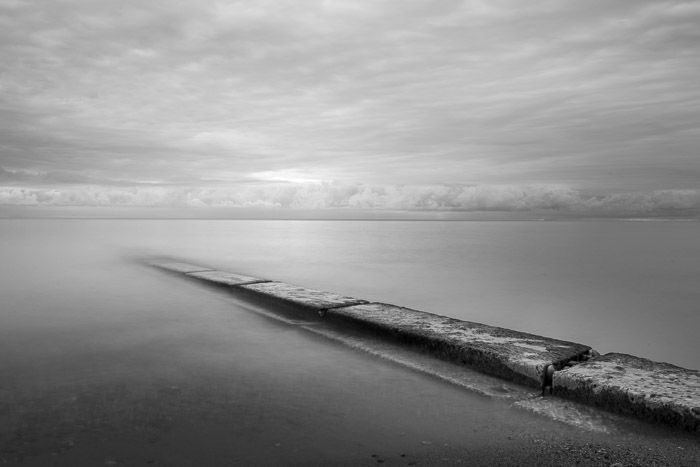
After you convert your image to monochrome, the HSL/Color panel becomes the B&W panel. Lightroom still recognizes the colors in your photo even though you cannot see them. In this panel, there are eight color channels with sliders. By default, the sliders are at zero. You can selectively lighten and darken the colors in your image. This adds richness and visual separation to your photo. You can emphasise and deemphasise certain colors.
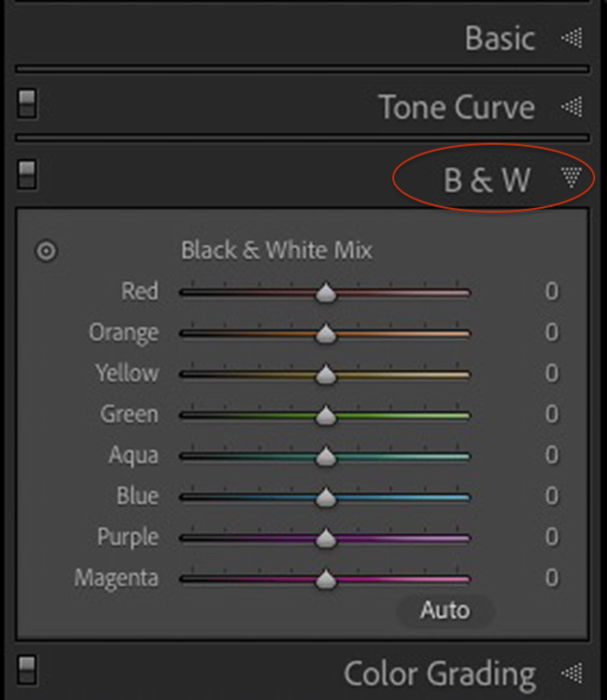
Screenshot of Lightroom's B&W panel.
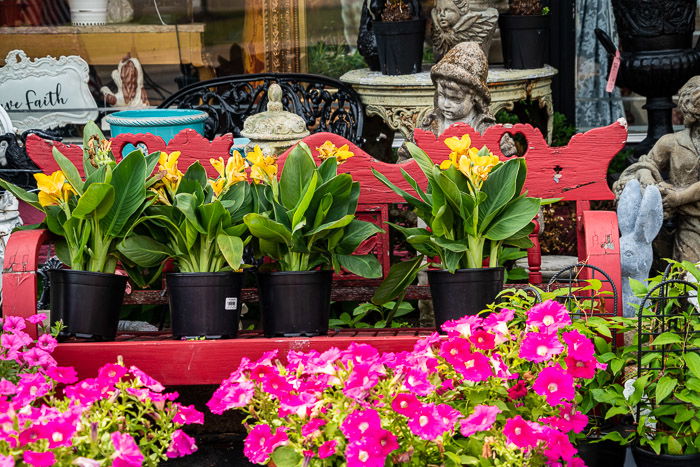
The original colored image of a bench at a local garden center.
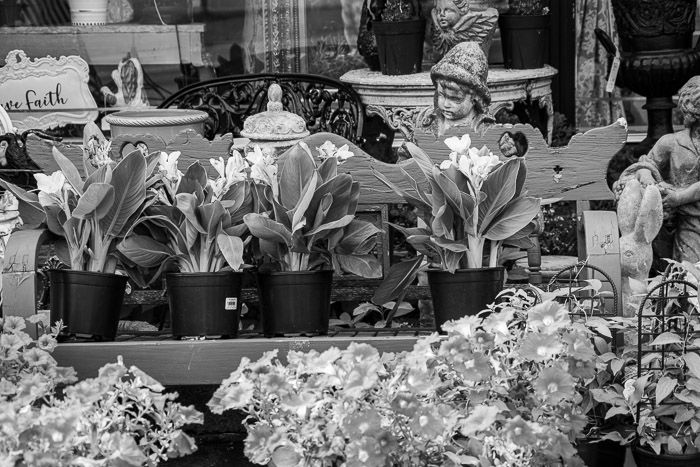
Image converted to black and white.
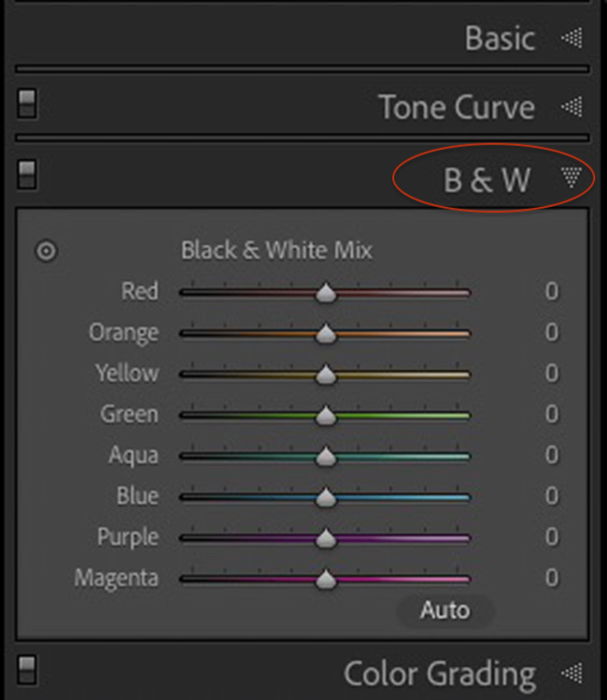
Screenshot of Lightroom's B&W panel showing color adjustments. Reds and oranges are lightened and blues and greens darkened.
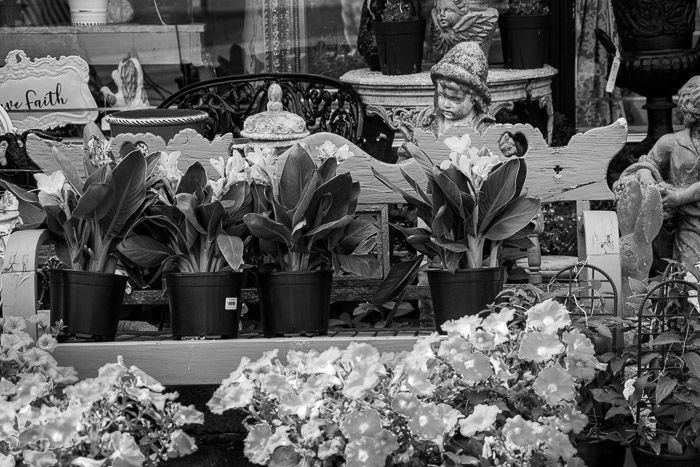
Image converted to black and white showing color adjustments. Reds and oranges are lightened and blues and greens darkened.
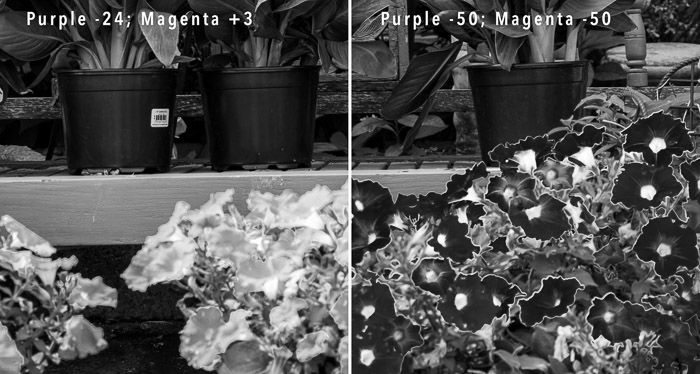
Two images comparing purple and magenta settings. Notice the halos created by moving sliders to the extreme (right image).
Photoshop has a couple of simple black and white conversion tools.
Desaturation is the simplest way to make an image black and white in Photoshop. This method is quick, but it is destructive. It changes your original file. It's always a good idea to work on a copy of your image in case you make a mistake or want to try something different. There are a few ways to do this:
To convert your layer to black and white, go to the Image drop-down menu. Select Image > Adjustments > Desaturate (Shift-Ctrl or ⌘U). Photoshop quickly strips your image of color.
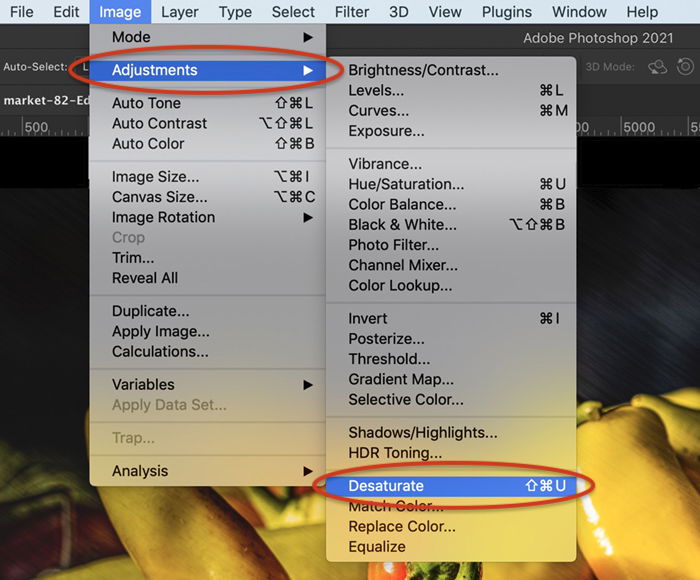
Screenshot showing how to desaturate an image in Photoshop.
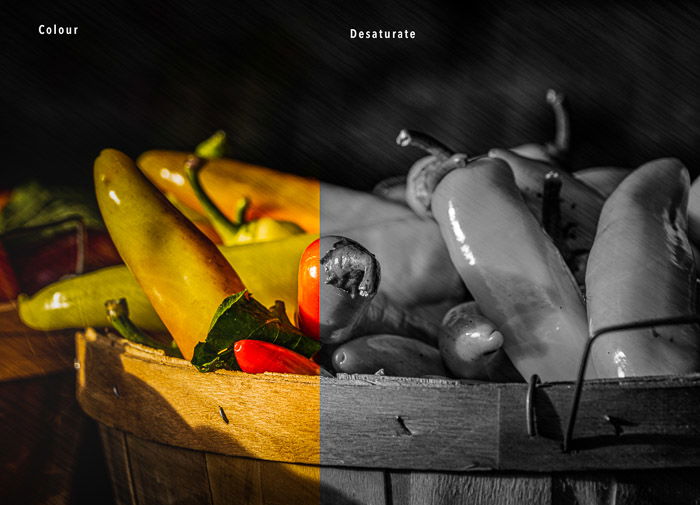
Comparison between the original color image and the result of the Photoshop desaturation tool.
Another way to remove the color from your photos is by creating a grayscale image.
I find that this method retains more tonal range than the Desaturate tool, but it is also destructive. All color information is lost.
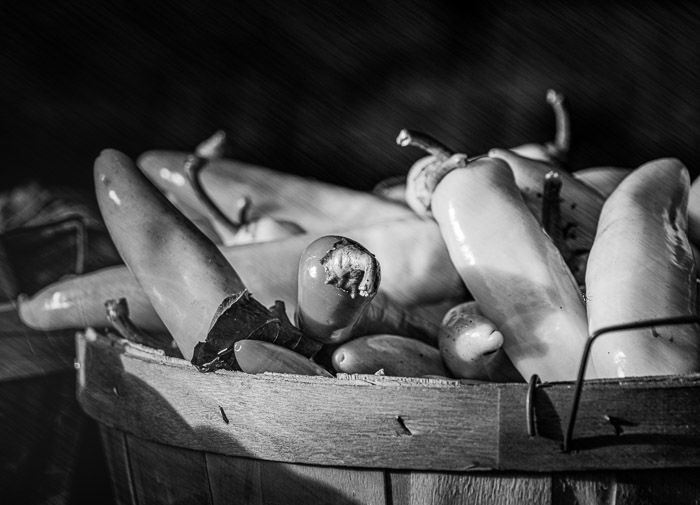
Converting your images to grayscale or using the Desaturate command are both easy. But these tools don't allow you to control the monochrome conversion. Photoshop has another tool for that.
Adding a Black and White adjustment layer is a nondestructive way to convert your photo to monochrome.
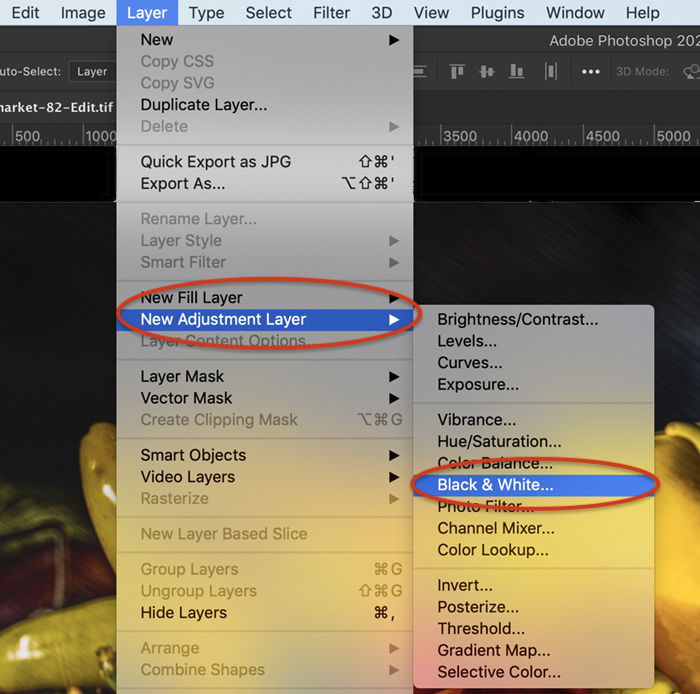
Screenshot showing how to add a Black & White adjustment layer in Photoshop.
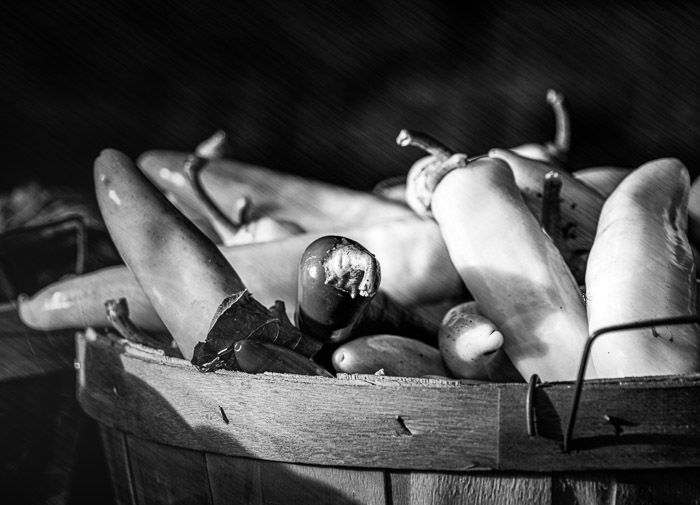
Image created using a Black & White adjustment layer with reds at -35 and yellows at +125.
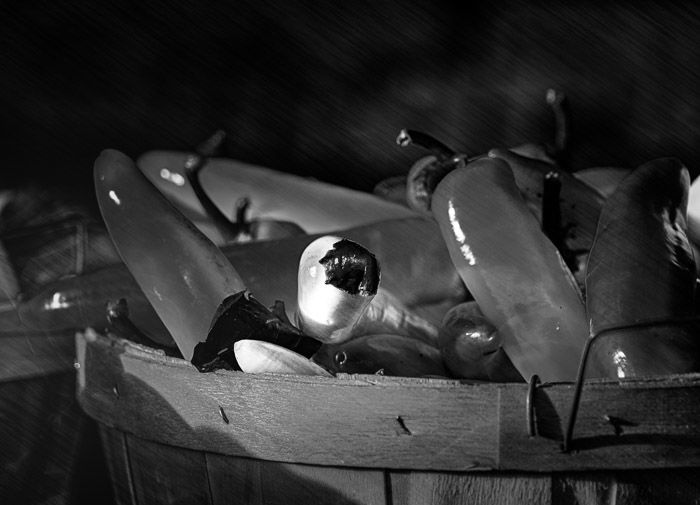
Image created using a Black & White adjustment layer with reds at +200 and yellows at -3.
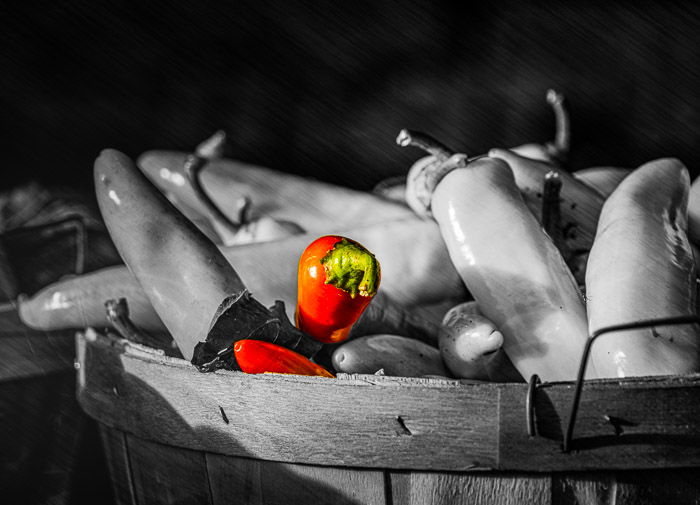
Image created using a Black & White adjustment layer with a mask painted over two red peppers.
It’s easy to make a black and white image in Photoshop and Lightroom. Some methods only require one click.
For a simple conversion, use the Desaturate command in Photoshop or select the Convert to Black and White tool in Lightroom. For a more artistic control, add a Black & White adjustment layer in Photoshop or the B&W panel in Lightroom.
Check out our Effortless Editing with Lightroom course to become a master at editing your photos!